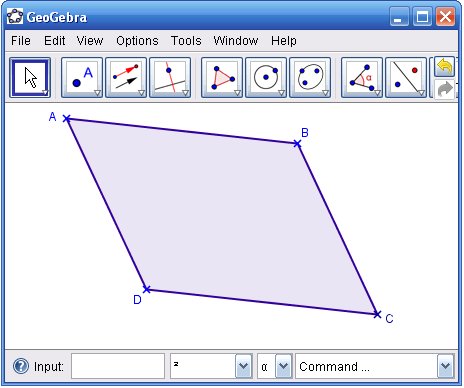GeoGebra in Mathematics Teaching
Invariant Properties of Quadrilaterals
Construct any quadrilateral Q (not regular)
- Locate and join all the midpoints to construct a polygon Q'
- Manipulate the quadrilaterals and discuss your obseravtions

- Given a parallelogram BADC, construct a quadrilateral PQRS in which D is the midpoint of PQ, C is the midpoint of QR, B is the midpoint of SR and A the midpoint of PS.
- Open and use the the file "Para_inv.ggb" or "Para_inv.html" in the above construction
- Why does the midpoints in a quadrilateral always give a parallelogram?
- How many quadrilaterals can you construct from the parallelogram "Para_inv1"?
Licensed under the GNU Free Documentation License
JCA Presentation: Using GeoGebra in Secondary School Mathematics teaching